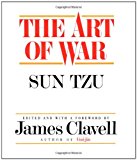The Gulf War - A New Kind of War
The Gulf War was much more than a fight to liberate Kuwait. It was the first non-conventional war; in which new, fairly new, or even experimental weapons were used. The Gulf War displayed much new technology that you will learn lots about in this paper. This paper may sound very technical, but that is what it is about, the new weapon technology vs. the conventional types of weapons used in previous wars. This paper is about the advancement of weapon technology, and how the military changed the tactics used before.
Tomahawk Missile and the F-117 Nighthawk (Stealth Fighter)
The Tomahawk cruise missile is a computer-guided missile fired from U.S. combat vessels carrying either 1,000-lb. warheads or a cluster of 166 soda-can-sized bomblets The warhead can hit within a few feet of its target. This is one of the backbone attacks of the war. This weapon allowed allied forces to destroy buildings in a very populated area without harming any civilians.
The Tomahawk cruise missile (the BGM-109) is a 20-foot-long weapon costing $1.3 million. A booster rocket shoots the missile off a ship or submarine. Then the small turbofan engine takes over and the missile jets toward land, directed by its “internal guidance system” which uses sensors and gyroscopes to measure acceleration and changes in direction. Once the missile crosses the shoreline, a more precise guidance method, TERCOM takes over. TERCOM scans the landscape at set checkpoints, taking altitude readings and comparing them to map data in its own computer memory. The missiles moves at about 550 miles per hour, and can make twists and turns like a radar evading fighter plane, all the while skimming over the land at 100 feet to 300 feet.
After covering up to 1,500 miles, the Tomahawk closes in on its target and a third guidance system then takes over, DSMAC (Digital Scene Matching Area Collator). DSMAC snaps a picture of the target area and compares that data to a version in its own memory. The computer then gives the wings and tail fins a final adjustment and takes the warhead to its target. The Tomahawk and the Tomahawk Antiship missile (TASM) are fitted on Iowa-class battleships, cruisers of the Virginia, Long Beach, and Ticonderoga classes, and destroyers of the Arleigh Burke and Spruance classes.
“Desert Storm was the first combat test of the cruise missile system. It also marked the first coordinated Tomahawk and manned aircraft strike in history. Within the first few minutes of Operation Desert Storm, Tomahawk missiles launched from battleships Missouri and Wisconsin struck with accuracy at Iraq’s presidential palace,” (Hersh, Press, 1994, p.137).
“During the war, 297 Tomahawks were fired, of which 282 began their mission successfully, nine failed to leave the tube and six fell into the water after leaving the tube. At least two, and possibly as many as 6 were shot down, most or all of them in a single mission profile most of the way to its target,” (Friedman, Naval Institute Press, 1991, p.231).
U.S. Forces used three platforms during the Gulf War that were in the stealth/low-observability category: the F-117 stealth fighter and two long-range cruise missiles, the Tomahawk Land Attack Missile (TLAM) and the Conventional Air-Launched Cruise Missile (CALCM).
“The F-117, which flew only two percent attack sorties, struck nearly forty percent of the strategic targets, and remained the centerpiece of the strategic air campaign for the entire war,” (Mc Cain, Shyles, Press, 1993, p.183).
Low observability made possible direct strikes at the heart of the Iraqi air defense system at the very outset of the war. In the past, we fought through elaborate defenses and accepted losses on the way to the target or rolled those defenses back. In the Gulf War, the coalition could strike Iraqi air defenses immediately, and they never recovered from these initial, stunning blows. With the combination of stealth and accuracy possessed by the F-117 stealth fighter and the Tomahawk Cruise Missiles, these two attacks carried out all attacks on downtown Baghdad. The F-117 operated at night and the TLAMs operated during the day. Given American sensitivity to casualties - our own and Iraqi civilians - they were ideal weapon systems for attacking targets in a heavily defended, heavily populated city. As well, the F-117 had a psychological utility that was probably shared by only the B-52. When Iraqis saw either, they ran for cover. Both were aircraft of a kind that only a super-power could possess, and both could deliver destruction with no advanced warning - small wonder, then, that both figured prominently in psychological operations pamphlets that were showered upon Iraqi troops.
On the other hand, the F-117 and long range cruise missiles also had limitations, both were less flexible and considerably more expensive than most conventional systems.
“The F-117, a subsonic, light bomber, had to operate at night to maximize stealthiness, and nearly nineteen percent of the strikes attempted by F-117s were adversely affected by weather, misses or no drops,” (Atkinson, Press 1994, p.247).
While not quite as sensitive to weather conditions as the F-117, cruise missiles had a smaller payload, required a lengthy targeting process, and could not be re-targeted after launch. Even without the flexibility of other aircraft, however, these platforms were able to set to terms the air operations over Iraq and bring the reality of war home for the residents of Baghdad.
AH-64 Apache Helicopter
The AH-64 Apache is specifically designed for an attack role. My uncle said that during the war the soldiers called it the flying tank. It’s Hellfire anti-tank missiles have a range of more than 3.7 miles and can penetrate the armor of any known main battle tank. The Apache may also be armed with 1.75inch folding-fin aerial rockets carried on two stub fins that provide additional lift and may serve as attaching points for external fuel tanks.
“Hard to kill, the Apache was designed to be cashworthy. Armor made of boron carbide bonded to Kevlar protects the Apache crew and helicopter’s vital systems,” (Francoa, Press, 1999, p.352).
Blast shields, which protect against 23mm rounds or smaller high-explosive incendiary ammunition, separate the pilot and copilot weapons system operator; thus, both crew members cannot be incapacitated by a single round. Armored seats and airframe armor can withstand .50 caliber rounds. The aircraft is 48 feet long, 12 feet high and can weigh 21,000 pounds maximum at take off. Top speed is 184 miles per hour, range is 300 miles and service ceiling of 21,000 feet.
In the weeks and months before the war, the Apache’s Bravo Company had developed new tactics that they hoped to use against Iraqi tanks and armored vehicles. The Apache helicopter was a ground-attack aircraft; tanks and fighting vehicles were it’s principal targets. The tactics developed by Bravo Company pilots were considerably different from the ones practiced in Europe. There the Apache pilots had been trained to fly low, using hills for cover, and popping up to fire. In the desert there were few hills high enough to use to hide behind. To compensate, Bravo Company had devised what they called high-energy and low-energy tactics. In both approaches the pilots line up their six helicopters shoulder to shoulder, in three teams of two. In low-energy tactics, the two helicopters in a team would fly 300-500 meters apart; there would be an 800-1000 meter spread between teams. The helicopters flew just 30 feet off the ground, inching forward just fast enough to leave a dust trail from their rotor behind them. It was not foolproof, however, in the relative flatness of the desert terrain, the tactic did not give Apache pilots as much of a chance to pull off a surprise attack as they would hope for. Low-energy tactics were for nighttime, then they would be virtually invisible. The high-energy tactics were for daytime use, when they would choose to move faster.
They called for the two-Apache teams to spread out with about 1= kilometers between them. Then they would circle and fly in at the target at speeds up to 40 miles per hour. The idea was to get close, fire, and get away fast.
The Apaches’ Hellfire missiles were laser guided, as well as the 30-mm guns. The laser accounted for the speed of the aircraft, as well as the wind, and the aircraft’s movement for seven seconds prior to firing. Attached to the pilot’s helmet was a two-inch-square semi-transparent monocle that extended about an inch or two in front of the pilot’s right eye. Projected onto the monocle was the targeting information that came from the Apache’s infrared targeting systems. There was also a cross hair-type targeting device. All of the Apache’s weapons systems were linked electronically to the monocle. All a weapons officer had to do was look at a target, lay the cross hairs on it, and fire his weapon of choice.
MIM-104 Patriot Missile
The MIM-104 Patriot tactical Air-Defense Missile System has a radar station to pinpoint incoming rockets, and a four-missile launcher. Patriot explodes near its target, destroying it with shrapnel. In the Gulf War, Patriot’s target was the Iraqi tactical ballistic missile, the Scud.
Designed in the late 1970s as an anti-aircraft weapon, the Patriot was modified in the mid 1980′s to defend against ballistic missiles as well. The system employs a 17.4 foot-long missile powered by a single-stage, solid-propellant rocket motor at Mach 3 speeds. The missile weighs 2,200 pounds and has a range of about 43 miles. It is armed with a 200 pound high-explosive warhead detonated by a proximity fuse, causing shrapnel to destroy the intended target.
“Each Patriot system has eight M-901 storage/transportation containers that serve as launchers, and each launcher has four missiles for a total of 32 missiles. The launchers are attached to the M-860 trailer. The system also has the MSQ-104 engagement control station, which is mounted on an M-818 tractor. The Track Via Missile (TVM) guidance system is the heart of the system,” (Boyne, Press, 1991, p.163).
The Patriot is built around a phased array of radar and fast computers. The missile is launched and guided to the target in three phases. First, the missile’s guidance system turns the Patriot toward the target as it flies into the radar beam. Then the computer directs the missile to the target. In the third phase, the missile becomes semi-active as its internal radar receiver guides it to the interception.
“Typically two missiles are fired at a target, but four would have to be fired at a broken up Scud to insure that at least two attacked the warhead section. The fire unit radar generally detected Scuds at about 70 miles, and the unit engaged at 10-20 miles. Alerts were often provided by satellites (DSPs) originally launched to detect Soviet missiles, and the time from alert to engagement was typically 6-7 minutes. The time from engagement to the destruction of the missile was typically 15-18 seconds; the Patriots and the Scud closed on each other at 2,000 to 4,000 ft/sec,” (Friedman, Naval Institute Press, 1991, p.327).
Throughout the Gulf War there were continuing military and news reports of the Patriot’s success in intercepting Scuds. The Army initially said the Patriot achieved an 80 percent success rate in Saudi Arabia and 50 percent in Israel. Those claims later scaled back to 70 and 40 percent respectively. However, not long after the War’s end, analysts began to question the Patriot’s performance. The Army and Patriot’s manufacturer, Raytheon Company, vigorously defended the system and said it was a Gulf War success story. And that is why the Patriot missile was one of the most successful and life saving weapons of the Gulf War.
Drones (RVPs)
This small, remote-controlled, pilotless plane emerged as a valuable asset in the Gulf War. These remote piloted vehicles (RVPs or, also known as UAVs for unmanned aerial vehicles resembled oversize model planes and acted as aerial spies.
The U.S. Navy, Marine Corps, and Army used basically two types of RVPs in the war, the Pointer and the more sophisticated Pioneer. The Pioneer drone (developed by the Israelis and produced in the U.S.) has a wingspan of 17 feet and is 14 feet long. It is powered by a 26 horsepower snowmobile engine and has a range of about 100 miles and flight duration of five hours. It can carry a multitude of sensors including television and FLIR. The drone is catapulted into the air and when airborne runs on liquid fuel. It is guided by an electronic box with a joystick that the operator uses to turn the plane left or right, up or down in the same way remote-controlled model airplanes works. Each pioneer costs about $500,000 and carries a $400,000 video camera that can take highly detailed pictures from 2,000 feet and transmit them 100 miles away.
According to a May 1991 Department of the Navy report, “At least one UAV was airborne at all times during Desert Storm.”
There were 522 sorties/hours flown - with the Navy having 100 sorties; the Marines Corps 94; the Army 48. RPVs were used extensively in Operation Desert Shield and Desert Storm, not only by the United States but also by coalition forces. In its use as long distance eyes for battleships guns, the RPVs position was sent to the shipboard computer.
In conclusion, The Persian Gulf War was a war of ethnic differences, and cruel leadership. Desert Storm was the same type of war that had occurred in this area for many years except for one thing. In Operation Desert Storm, sophisticated technology was used to end the war in a quick and timely manner.
It can be said that due to the extreme power and sophistication the U.S. and its allies that Saddam and his tiny nation of roughly 17 million people stood no chance against the U.S. military and its Allies.
“One of the goals of the Gulf War was to damage the Iraqi Army so badly that it would take ten years for them to build their forces again. Those ten years are up,” (Segyara, 2001).
In this paper I could not possibly tell all that needed to be known about all these weapons that own the “new type of war”, a war in which technology is king and whoever has the most advanced weapons ultimately wins. This war is only the first in a long line of wars to come that will use sophisticated technology to defeat the enemy. The advanced weapon technology used in the Gulf War changed the way wars are fought today. That is why the Gulf War is a frontier in history.
Bibliography
Primary Sources
- Boyne, Col. Walter J. U.S. A.F. (RET) Gulf War - A Comprehensive Guide to People, Places, and Weapons Press, 1991.
- Contains pictures, maps and information on the Gulf War.
- Byrd, Jeff U.S. Army ( Desert Storm veteran)
- I got lots of information about the war and weapons from this person.
- This informative video provides an overview of Operation Desert Storm.
- This video provides an overview of Operation Desert Shield.
- Francoa, Leonard Ally to Adversity: An Eyewitness account of Iraq’s Fall From Grace Press, 1999
- Interesting first hand account of Operation Desert Storm filled with insights into intelligence operations.
- This book provided very useful information and strategy of the Gulf War.
- Mc Williams, Barry This Ain’t Hell, But You Can See it From Here! A Gulf War Sketchbook Press, 1992
- This book put the Gulf War in perspective for me. This was one of the two books that I read in its entirety. It provided useful information about the war. This book tells it like it is.
Secondary Sources
- Atkinson, Rick Crusade: The Untold Story of the Persian Gulf War Press, 1994
- This book told little known facts and a darker side of the war.
- Blair, Arthur H. At War in the Gulf: A Chronology Press, 1992
- This informative book gives in chronological order all the events in the war.
- Friedman, Norman Desert Victory: The War For Kuwait Naval Institute Press, 1991.
- This book provided photos and insights on the Gulf War.
- Hersh, Seymour M. Missile Wars Press, 1994
- This book provided useful information on the missiles used in Desert Storm.
- Mc Cain Thomas A., Shyles Leonard The 1,000 Hour War Press, 1993
- This book gives a detailed summary of the Gulf War.
- “The Persian Gulf War” - Encarta Encyclopedia 2000 Ed.
- This article provided information on the Gulf War.
- WWW.geocities.com/Athens/6506/wep.html visited 11/26/00
- This web site gives pictures and specifications of air and ground weapons of the Gulf War.




